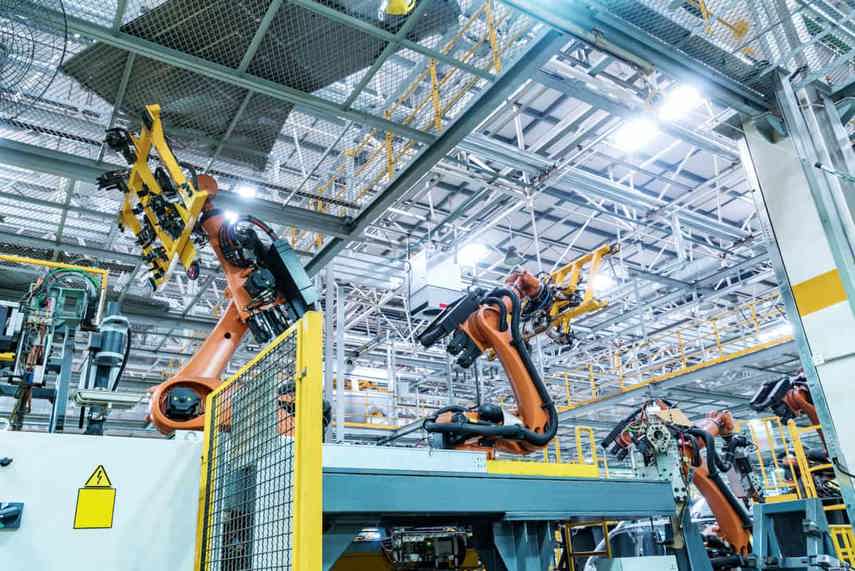
Using technology such as machine learning and artificial intelligence can minimise the risk of ineffective inventory management and allow your business to continue to thrive.
Machine learning supplies real-time information, gathered and used to improve predictions, optimise assets, and reduce the risk of loss.
What is machine learning?
Machine learning at its most basic, is the practice of using algorithms to deconstruct and learn from data. Powered by large-scale data it is a form of artificial intelligence, that provides computers with the ability to learn without being explicitly programmed.
The artificial intelligence used in machine learning and modelling make it possible to consider external and independent variables that affect demand and time-to-customer inventory performance. Any data from point of origin, transit routes, location and status can be collected on inventory stock and reported by radio frequency identifiers.
 Machine learning has many practical applications within inventory management, including tracking and robotics.
Machine learning has many practical applications within inventory management, including tracking and robotics.
Why should you care about machine learning?
Businesses can build a machine learning model to predict nearly any aspect of your operations based on the data it receives. Notably, with more feedback and data, machine learning has the potential to get better over time.
At its core, machine learning effectively provides a hugely scalable, tireless and consistent quality digital labour force able to perform tasks previously undertaken by employees.
Benefits of machine learning for inventory control
Using machine learning to minimise the factors affecting inventory management is a growing trend in many of today’s industries.
With machine learning, up-to-date data input is used to adjust calculations and predictions made by software, meaning the software is customised to suit your business the more you use it.
This optimises the performance of tracking technology in inventory management and offers more accurate data to assist in planning for the future.
Real-time monitoring and machine learning algorithms will:
- optimise processing operations
- facilitate better decision-making to manage production runs
- provide real-time knowledge and helpful insights into machine load levels
- determine how the load levels of individual machines will impact overall production, scheduling and performance
- help you notify customers in advance of any disruption to supply
- help customers to find products via a searchable computer display and advanced voice recognition
- determine how one component interacts with every other area of a business operation
- help predict future inventory stock needs
- improve stock tracking accuracy
- help optimise inventory storage.
Manufacturers place great importance on finding new tactics for growth and delivery of a quality product while still capable of undertaking short lead-time production runs for their customers.
For retailers, robots can navigate the store using laser-based sensors, generating real-time information via machine learning and computer vision technology. Scanning inventory and seeking out patterns in product or price discrepancies.
 Robotics within a manufacturing facility can improve inventory management and fulfilment speed.
Robotics within a manufacturing facility can improve inventory management and fulfilment speed.
Optimising inventory management with machine learning
For most companies concerned with inventory management, plenty of time is put in to improving optimisation techniques.
With the aid of artificial intelligence and machine learning, algorithms can be crafted to fit customised constraints that suit your business. This can be used to improve inventory optimisation, particularly in businesses with multiple distribution locations.
Reducing forecasting errors
In manufacturing, sturdy supply chains are essential to keep constant product availability. Most industries heavily rely on forecasting to assess how much stock will be required in the near future. With forecasting errors, over- or under-stocking can cost growing businesses customers.
Using machine learning technology, predictions can be made by continuously using data to adjust forecasts to suit companies and take into account more factors than typical forecasts.
Machine learning can be used to reduce transport and warehousing costs by reducing inventory to a lean but comfortable level, and can predict demand in the near future, allowing for stock to be purchased in time for sales. This improves customer delivery times and ultimately improves customer satisfaction.
Minimising idle stock
One of the major factors affecting inventory management is the concern surrounding stock levels.
Predictions to calculate how much stock to carry are often unpredictable when solely relying on outdated tracking models. Excess and idle stock essentially symbolises tied-up money that could be put to better use. Idle inventory is also highly likely to get damaged or be outdated by new stock.
Shrinking stock levels requires accurate predictions of future demand, which is becoming more accessible due to machine learning technology. By using current data, inventory mismanagement can be reduced to ensure optimal business performance, ultimately leading to satisfied customers.
Improving customer satisfaction
One of the common uses of artificial intelligence, specifically in the online retail industry, is to use autonomous robots to interact with customers.
This use of real-time data and machine learning technology can help customers by scanning inventory, searching for particular items, or identifying deals. Using bots to improve customer relations, while not specifically targeting inventory management, can still identify low stock levels and offer insightful analytics regarding product demand.
To combat negative factors affecting inventory management, artificial intelligence and machine learning technology can be used to optimise inventory levels to avoid wasted stock.
By using data analytics to forecast more accurate future demand and to plan stock purchasing, machine learning can offer a business advantage by providing consistency for customers while also relieving management stress regarding fluctuating demand and stock management.
By diverting inventory management to new technologies, more focus can be put on customer satisfaction and product quality, ultimately improving your business performance.
